In this installment of our new Keen Insights knife review series, we’re in familiar territory for most American knife nuts: the Benchmade Bugout.
This ultralight EDC knife makes sacrifices but is still robust enough to be a contender for light bushcraft and self-defense. And the popularity of the platform means there are numerous configurations and aftermarket options.

I bought this when I went looking for a knife to add to a minimalist hiking kit. I’ve been doing more in the outdoors and most of the knives I carry regularly are big. Big also means heavy, usually, and the Bugout is anything but heavy.
Benchmade Bugout Specs
Designer: Benchmade
Mechanism: AXIS®
Action: Manual-opening
Blade Steel: CPMS30V
Blade Length: 3.24″
Blade Thickness: 0.090″
Open Length: 7.46″
Closed Length: 4.22″
Handle Thickness: 0.42″
Weight: 1.85oz.
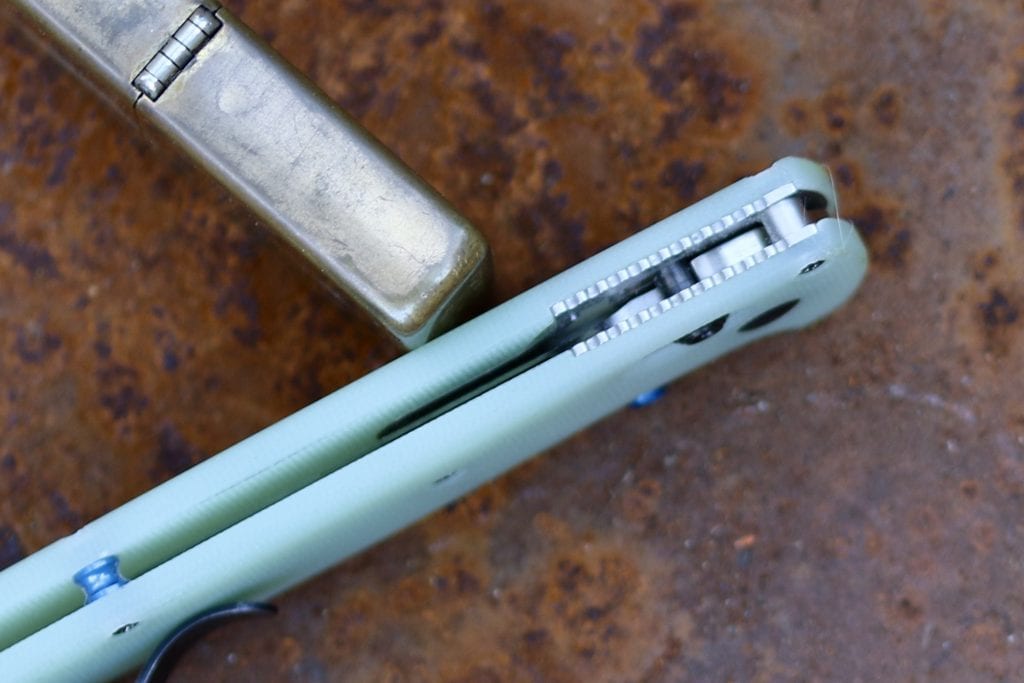
Why the Bugout?
This is a lock-blade knife that comes in at just 1.85 ounces. That’s insanely light. If weight is your first consideration, this is the knife.
It is also sharp. The blade is thin, which makes it good for slicing, and like all of Benchmade’s knives, it comes from the factory with the edge you’d expect from a knife in this price range.
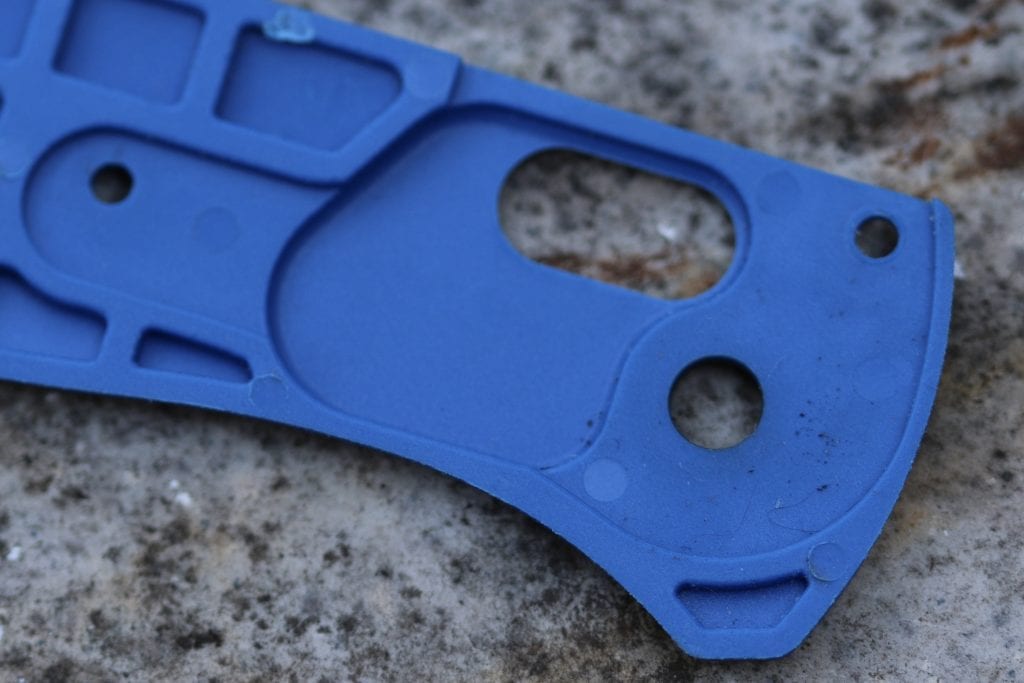
Why is it so light?
This isn’t talked about much in Benchmade’s advertising materials, but it is something worth noting. Inside of most knives that look like this, there’s either a pair of metal liners or the handle of the knife itself is metal. Aluminum, brass, steel, titanium—almost any metal will provide some decent rigidity.
That rigidity is what gives a pocketknife strength from side to side. While prying is rarely recommended with a pocketknife, it isn’t always bad. The Benchmade Bugout has a partial liner that holds in the front joint and some moving parts but leaves the rest of the handle to its own devices.
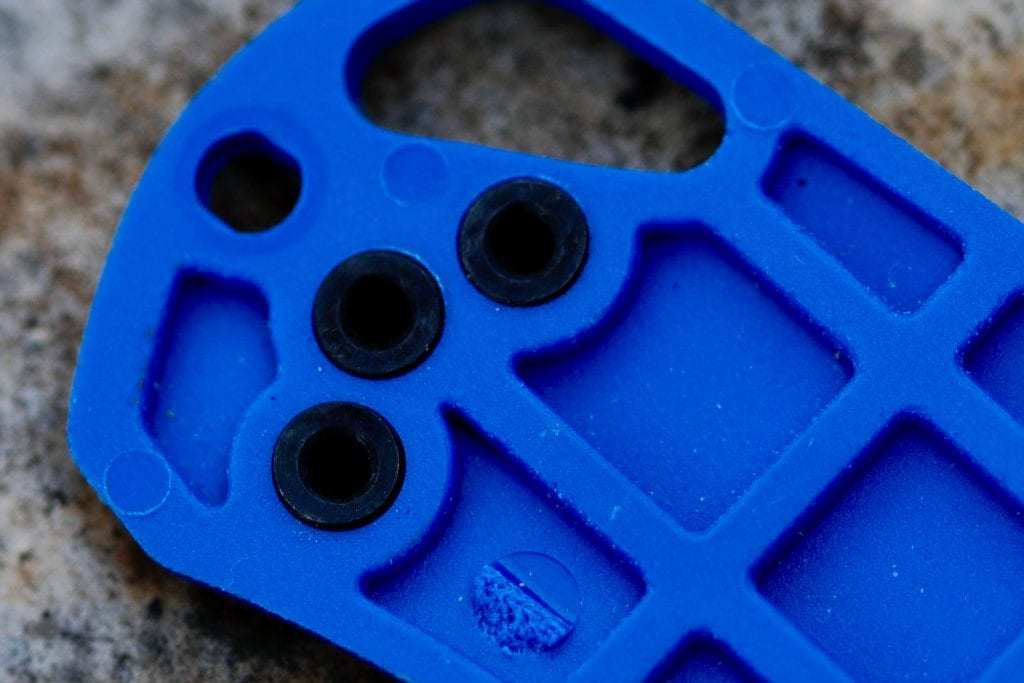
This design cuts down on the weight and isn’t quite as strong, laterally, as it might be otherwise. If you know that going in and baby the knife a bit in situations that would stress the sides of the pivot point, you should be good.
The Rest of the Grip
Because they’re only partially lined, the handle falls into some confusing nomenclature. I’m going to call the two slabs scales because that is what they most resemble. And this one, when I bought it, had blue Grivory scales.
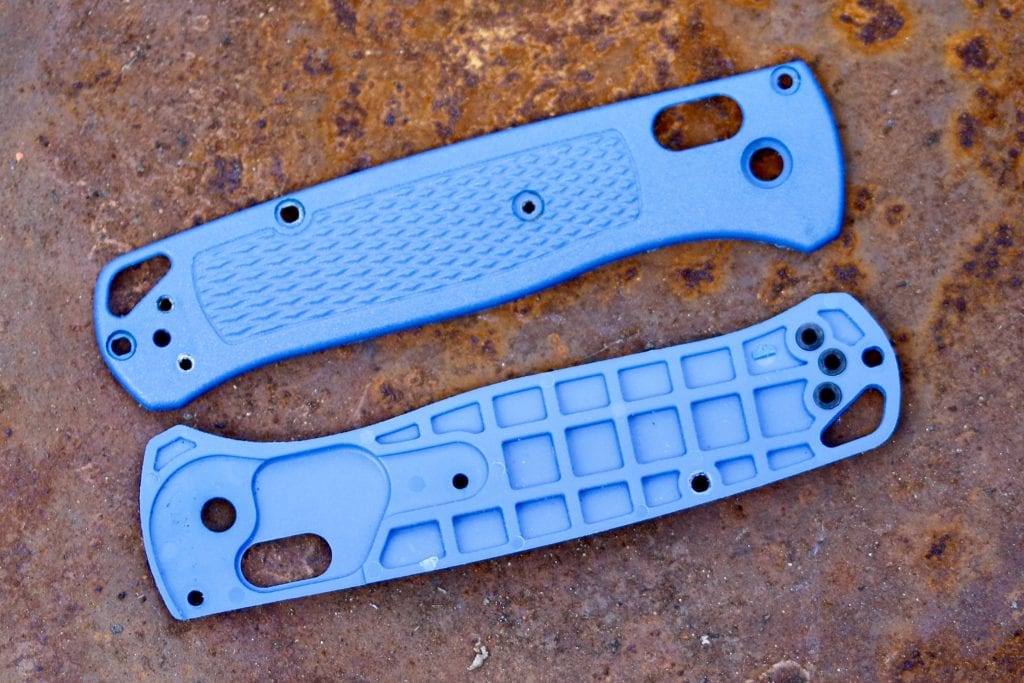
Grivory is a semi-crystalline thermoplastic. It is hard. That rigidity gives it the strength that keeps the Bugout working.
Some hard plastics, though, are a sensory challenge for me. I’ve never been a fan of Grivory or its competitors, even though I have no logical or articulate reason for my distaste. I also can’t rub my hand down cotton fabrics, but wool—no matter how scratchy—feels fine.
G10, though, has never set off my system, and I found a set of scales from Flytanium that were in the natural G10. I’ve always had a soft spot for the ghost-green jade G10s, so I made the switch.
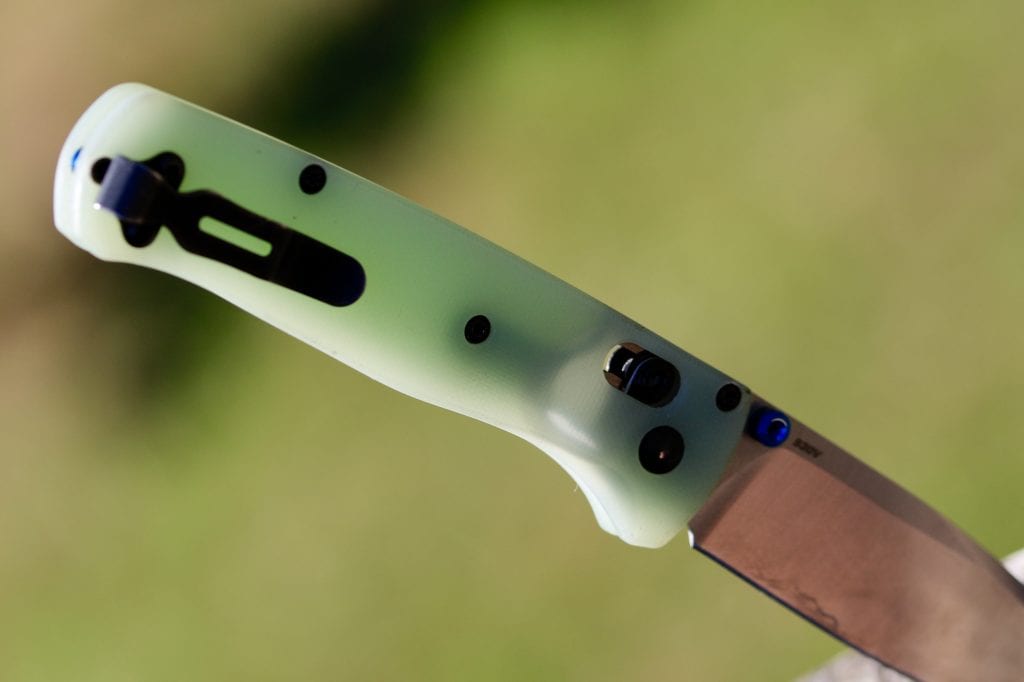
Flytanium, and others, make scales in metals, too, but they add weight to the Bugout and really may defeat what I see as the purpose.
DIY — Replacing the Grip Scales
Getting the scales replaced is not complicated. You’ll need a small set of star bits and some patience. And work in a controlled space because there are some pins that will be easy to lose. If you’ve ever lost an AR’s detent spring, you’ll know what I mean.
All told, it took me about 10 minutes to swap out the scales.
The Blade
The Benchmade Bugout has a flat grind that ends above the mid-line of the blade. The grind then reverses direction near the tip to create a short, modified spear-point blade. Or maybe it is a drop-point with a short false edge.
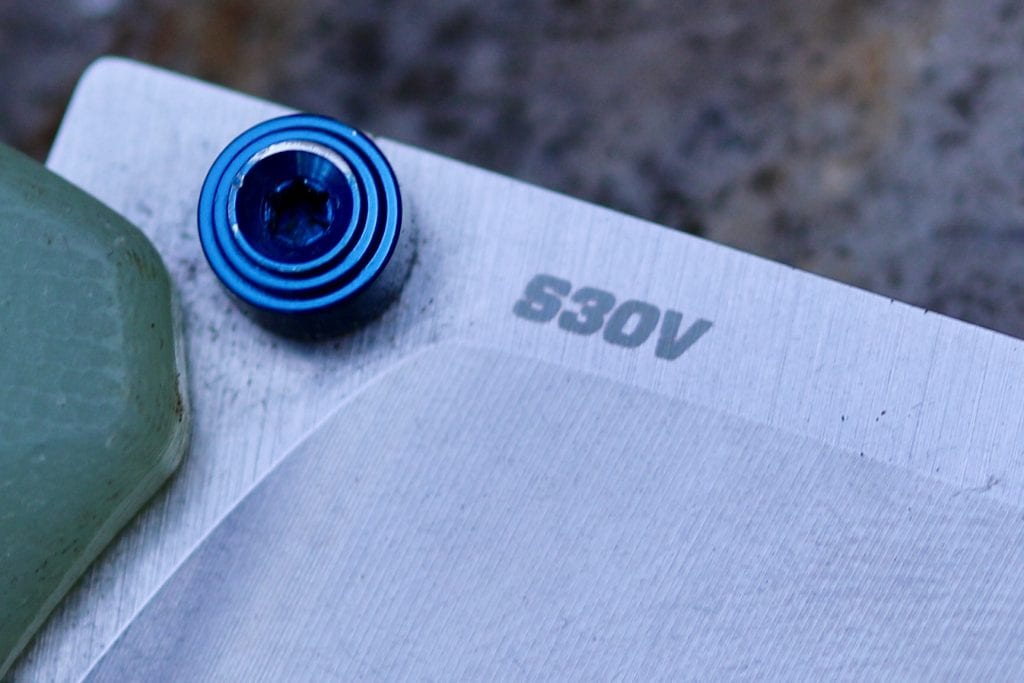
The factory edge, as I’ve noted, is sufficient. As this is a working knife, it has a secondary bevel that isn’t as delicate as it might otherwise be. The Bugout should stay functionally sharp through a hefty amount of use without the real risk of chipping out or excessive dulling during vigorous cuts.
Most of this strength comes from the CPMS30V blade. CPMS30V is a hardened stainless that starts as a powder. It was developed specifically for its ability to provide stainless attributes and a solid Rockwell rating (Benchmade says between 58 and 60 RH, which is on the higher end for anything stainless).
The Lock
Benchmade’s Axis lock seems like it would be complicated, but it isn’t. There’s a stop-bar that extends through both sides of the handle. This bar is under pressure from a spring (a tempered piece of steel that you can actually see in the lock itself). The bar indexes a groove in the back of the blade.
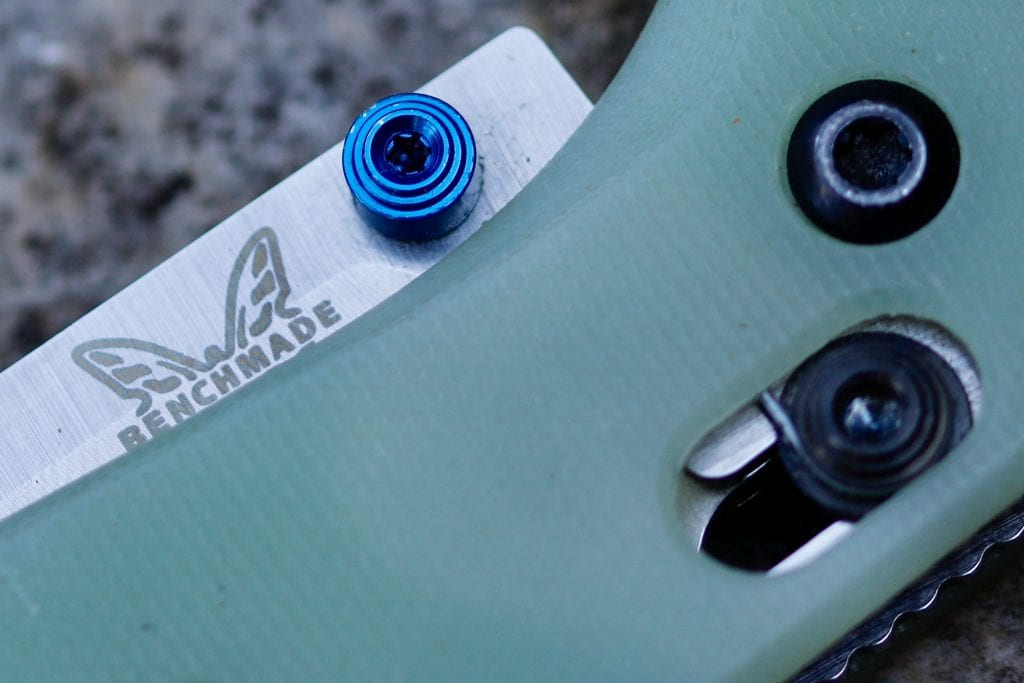
When you slide the bar back, the blade is free to rotate and it falls out of the locked position easily. As you open the blade, the back of the blade pushed the lock bar out of the way, until it is free to snap into place again. The motion of unlocking the bar is unique—you aren’t going to accidentally unlock it during routine cutting tasks.
This makes the Bugout a decent candidate for daily use and minimalist use in the woods. The handle has just enough texture to keep your hand from slipping, and just enough of a flare near the pivot to keep you from moving forward on the blade accidentally.
As an EDC knife, the Bugout is ideal for those gentlemen’s knife scenarios. It is long enough to be useful for self-defense, but not so long or scary that it is going to scare the sheep when you pull it out to open a letter at the office.
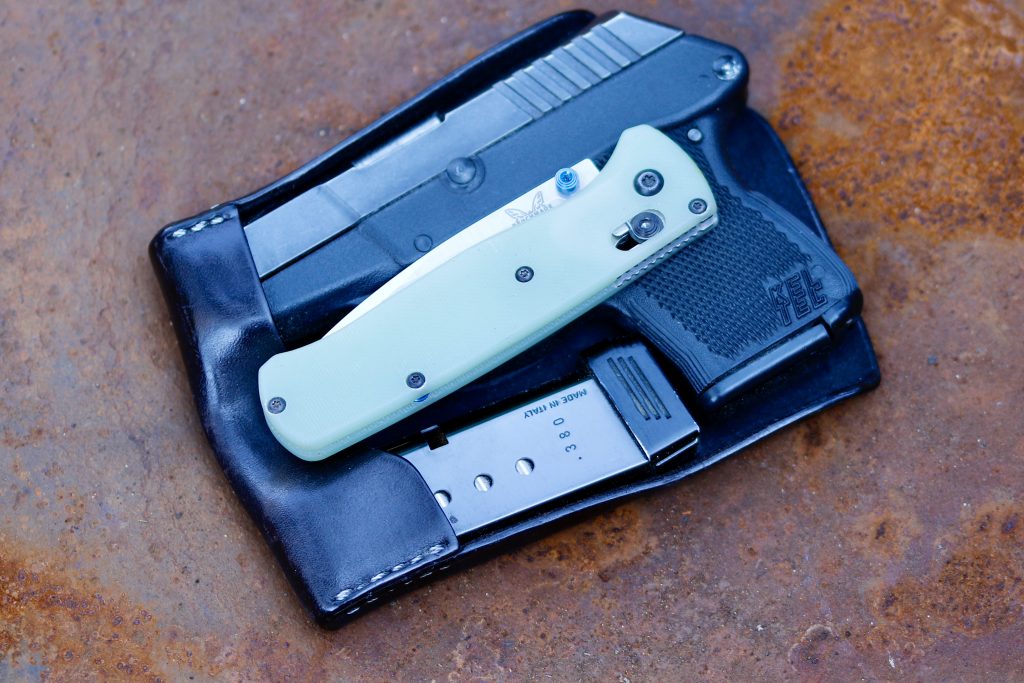
What it Isn’t
I’ve always thought that the name—Bugout—implied that this was meant to be the ideal knife for your bugout bag. And in a way, I guess it is. Far too many people have built bugout bags that they can’t possibly carry anywhere.
So if weight is the most important feature, this is it. But this isn’t a knife that is designed for a lot of what stereotypical preppers see themselves doing after they bug out.
There’s no batoning kindling with this knife. While it might make a solid set of shavings, it isn’t designed to be beaten on the spine.
The spine is just square enough that it makes striking sparks off a Ferro doable. But that is going to stress that joint, so be careful.
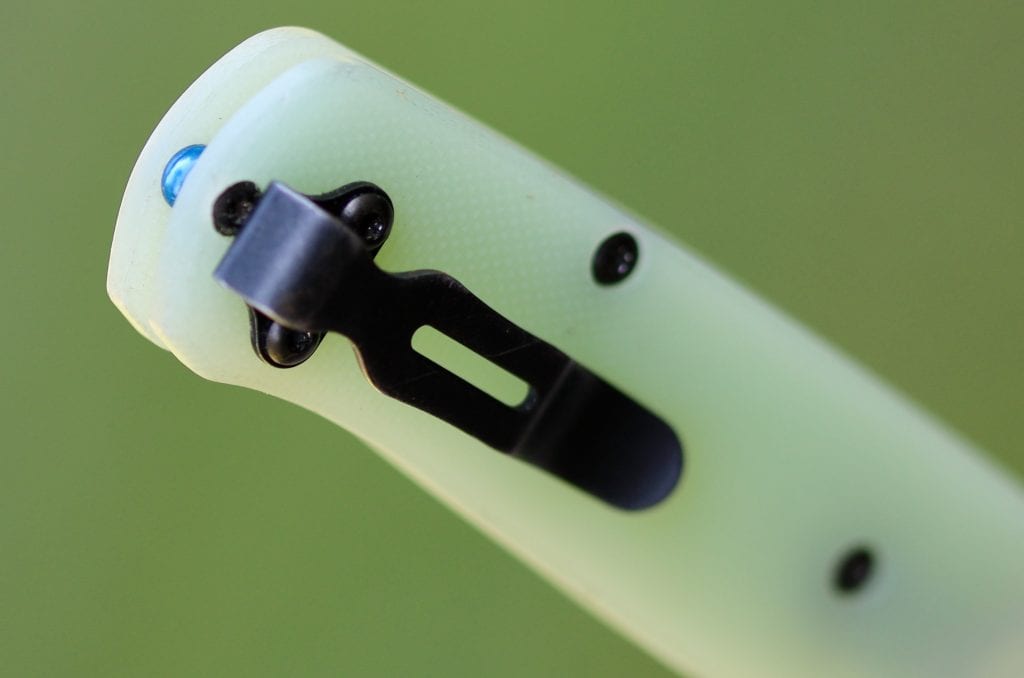
There are also some small parts on this dude. Those springs, I mentioned, aren’t easily replaced when you’re out on a long hike, or when it is TEOTWAWKI.

For those looking for even more from a knife—maybe something that adds a bit of weight in exchange for a bit more strength—Benchmade has a lot more to offer.
The pricetag?
These start at an MSRP of $155. If you want a serrated edge, or blade coatings, or even carbon-fiber scales, the price is going up.
For me, it was worth the expense. I’m working on a pack set-up that comes in at an even ten pounds before food and water, and the Bugout is the only knife I’ve got in that kit right now.


